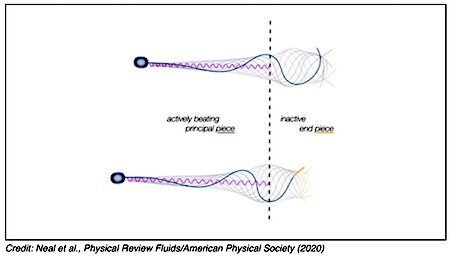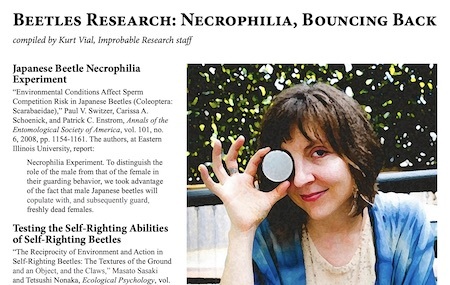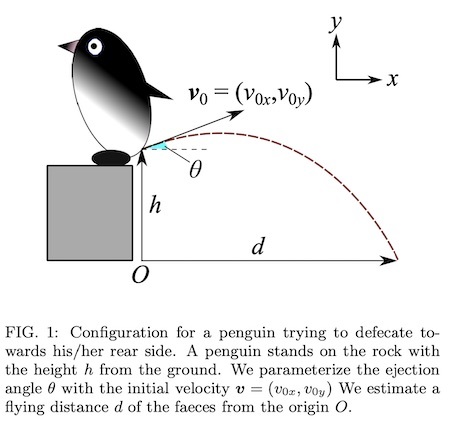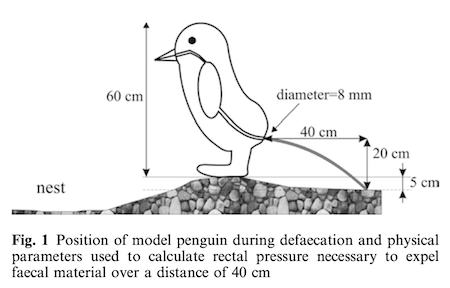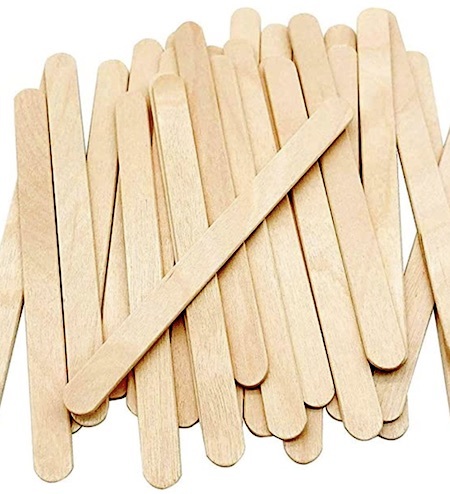Marc Abrahams's Blog, page 112
July 6, 2020
Pocket-Sized #1019: “Hand Clap Shape-sounds”
Hand Clap Shape-sounds
In this Pocket-Sized episode #1019, Marc Abrahams shows an unfamiliar research study to Chris Cotsapas. Dramatic readings and reactions ensue.
The research mentioned in this episode is featured in the Important Research issue (Vol. 25, #5) of the Annals of Improbable Research Magazine.

Remember, our Patreon donors, on most levels, get access to each podcast episode before it is made public.
1. Chris Cotsapas encounters:
“Inferring the Hand Configuration from Hand Clapping Sounds,” Antti Jylhä and Cumhur Erkut, Proceedings of the Digital Audio Effects Workshop (DAFx’08), pp. 301-304, 2008.
Seth Gliksman, Production Assistant
Available on Spotify, Apple Podcasts, Overcast, Google Podcasts, AntennaPod, BeyondPod and elsewhere!

Sperm Production: Appreciating a Piece of Tail
The far end of the tail of a human sperm has been studied scientifically a bit less than the other parts of the sperm’s structure. A new study suggests that this little chunk is a fairly important part of the sperm’s swimming mechanism.
“Doing more with less: The flagellar end piece enhances the propulsive effectiveness of human spermatozoa,” Cara V. Neal, Atticus L. Hall-McNair, Jackson Kirkman-Brown, David J. Smith, and Meurig T. Gallagher, Physical Review Fluids, epub 2020. The authors, at the University of Birmingham, UK, explain:
“Spermatozoa self-propel by propagating bending waves along a predominantly active elastic flagellum. The organized structure of the “9 + 2’’ axoneme is lost in the most-distal few microns of the flagellum, and therefore this region is unlikely to have the ability to generate active bending; as such it has been largely neglected in biophysical studies. Through elastohydrodynamic modeling of human-like sperm we show that an inactive distal region confers significant advantages, both in propulsive thrust and swimming efficiency, when compared with a fully active flagellum of the same total length.”

The Jell-O museum
The ‘Jell-O Museum’ website is temporarily closed,, but aficionados of Jell-O may be interested in the The Jell-O Gallery in Le Roy, NY, US. It’s run by The LeRoy Historical Society.
“In 1845, Peter Cooper dabbled with and patented a product which was ‘set’ with gelatin. Suffice it to say, it never did ‘jell’ with the American public. In 1897, Pearle Wait, a carpenter in LeRoy, was putting up a cough remedy and laxative tea in his home. He experimented with gelatine and came up with a fruit flavored dessert which his wife, May, named Jell-O. He tried to market his product but he lacked the capital and the experience. In 1899 he sold his formula to a fellow townsman for the sum of $450.” Text courtesy the Jell-O Museum
Notes:
● The Jell-O Gallery in Le Roy is normally open for visits, but check ahead for current lockdown status.
● The text above is from the Jell-O Museum website, which is now offline, but can still be found, to some extent, via Archive.org
● Production of Jell-O in LeRoy ended in 1964.
● The 1992 Ig Nobel Chemistry prize was awarded to Ivette Bassa, constructor of colorful colloids, for her role in the crowning achievement of twentieth century chemistry, the synthesis of bright blue Jell-O (see photo above).
Research research by Martin Gardiner

July 5, 2020
Beetle necrophilia and self-righting ability, in spotlights
The Japanese Beetle Necrophilia Experiment and a test of the self-righting abilities of self-righting beetles get spotlighted in two beetle research studies featured in the “Beetles Research” column in the special Small Animals issue (vol. 26, no 3) of the Annals of Improbable Research.

July 3, 2020
Penguin Pooing Pressure, Calculated Anew
The penguin pooing pressure calculation that won the 2005 Ig Nobel Prize for fluid dynamics has been calculated anew by a different group of scientists.
The new study is: “Projectile Trajectory of Penguin’s Faeces and Rectal Pressure Revisited,” Hiroyuki Tajima and Fumiya Fujisawa, arXiv 2007.00926v1, 2020. The authors, at Kochi University and at the Katsurahama Aquarium, Japan, report:
We discuss a trajectory of penguins’ faeces after the powerful shooting due to their strong rectal pressure…. We estimate the upper bound for the maximum flight distance by solving the Newton’s equation of motion…. In the presence of the viscous resistance, the grounding time and the flying distance of faeces can be expressed in terms of Lambert W function. Furthermore, we address the penguin’s rectal pressure within the hydrodynamical approximation combining Bernoulli’s theorem and Hagen-Poiseuille equation for viscosity corrections. We found that the calculated rectal pressure is larger than the estimation in the previous work….
In the pioneering work of Reference [2], it is reported that this actual pressure could range from 10 kPa for relevant values of the faeces viscosity and the radius of the the bottom hole.
A Look Back at the Pioneering Early Work, and at the Pioneer
That 2005 Ig Nobel Prize was awarded to Victor Benno Meyer-Rochow of International University Bremen, Germany and the University of Oulu, Finland; and Jozsef Gal of Loránd Eötvös University, Hungary, for using basic principles of physics to calculate the pressure that builds up inside a penguin, as detailed in their report “Pressures Produced When Penguins Pooh — Calculations on Avian Defaecation” (published in the journal Polar Biology, vol. 27, 2003, pp. 56-8). Here is a technical drawing from that original penguin poo pressure paper:
Meyer-Rochow has discussed why he undertook the question.
And by happy coincidence, this week the ICES Journal of Marine Science published his invited biographical essay “Ingredients to become a scientist: curiosity, enthusiasm, perseverance, opportunity, and a good pinch of luck.” The essay is filled with adventures, of which here is a tiny sample:
a personal highlight was the first (and only) Jamaican Antarctic Expedition with my assistant Walton Reid in 1993 (which led me to be introduced to Queen Elizabeth II when she visited the University of the West Indies in Kingston, Jamaica). When asked by “The Queen” if it hadn’t been very cold in Antarctica and she inquired about how our work had benefitted society, I replied that, of course, it had been a little cold at times and regarding our results, they had made the “book of human knowledge” just a tiny bit thicker (I am not a believer that all research must immediately be seen to be applied).
You have really got to keep your eyes open and retain a childish curiosity (curiosity may kill the cat, but for a scientist it is an essential ingredient: another piece of advice) and, when I saw (and photographed) pooping penguins, I immediately wondered about the pressure that these not exactly tall birds generate to propel their faeces up to 50 cm away from their nest’s edge. The research on this immensely important aspect of penguin biology, conducted with my research assistant Dr Joseph Gal, led to an Ig- Nobel prize from Harvard University, which quite honestly was very helpful to me in Japan and many other countries (as I, erroneously, was often announced to the audience as a “Nobel prize winner”—well, of sorts).

The Nutty Ice Cream Stick Machine Patent
The Nutty Ice Cream Stick Machine patent is now more than 60 years old:
“Ice Cream Stick Machine,” William A. Nutty, U.S. Patent 2,866,420, issued December 30, 1958. The inventor, in Chicago, Illinois, explains (in the patent):
This invention relates to a method and apparatus for forming an ice cream novelty, and more particularly to an ice cream bar or edible comestible in the form of a stick composed of a number of flavors or colors of ice cream molded in a manner to produce an ornamental surface having a spiral or “barber pole” appearance.
A principal object of the invention is to provide an ornamental frozen confection or edible comestible having not only an ornamental surface having eye appeal, but also taste appeal by providing multiple flavors in the same confection.
A further object of the invention is to provide a frozen confection in which there may be embedded a stick for ease in eating and also provided with a wrapper or container adapted to catch the drippings or fragments from the confection while it is being consumed.
Another object of the invention is to provide a suitable wrapper and stick for a frozen confection which may be simply applied by hand or automatic machinery and which may be readily opened for consumption of the frozen comestible.
We remind you to not neglect, unless you want to, a study on Ice Cream Sticks’ Aroma Influence.

July 2, 2020
Huh? Ig Nobel Prize winner wins Heineken Young Scientist Award
 Mark Dingemanse was awarded the Heineken Young Scientists Award in Humanities 2020. The official announcement says:
Mark Dingemanse was awarded the Heineken Young Scientists Award in Humanities 2020. The official announcement says:
Mark Dingemanse studied African languages and cultures at Leiden University. He carried out research for his PhD in Ghana, receiving his doctorate cum laude in 2011 at Radboud University Nijmegen. That work contributed to a fundamental shift in research on the relationship between form and meaning in language… [He is] an associate professor in the Department of Language and Communication at Radboud University [and] an affiliate research fellow at the Donders Institute for Brain, Cognition and Behaviour in Nijmegen.
In 2015 he and two colleagues were awarded an Ig Nobel Prize “for discovering that the word ‘huh?’ (or its equivalent) seems to exist in every human language”. The Ig Nobel Prizes are awarded for “science that makes you laugh, then think”.

Ice Cream Sticks’ Aroma Influence
What may be an advance in the understanding of ice cream sticks’ aroma influence emerges from a reading of a now-almost-two-decades-old study. First, for anyone not familiar with ice cream sticks, here is an image of some generic ice cream sticks:
“The Impact of Wood Ice Cream Sticks’ Origin on the Aroma of Exposed Ice Cream Mixes,” S. Jiamyangyuen, J.F. Delwiche, and W. J. Harper, Journal of Dairy Science, vol. 85, no. 2, 2002, pp. 355-359. (Thanks to James Harkin for bringing this to our attention.)
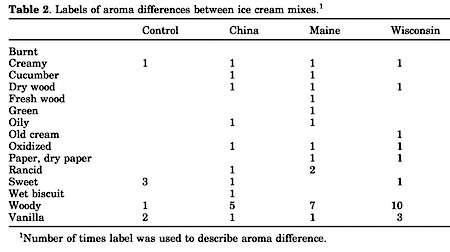
The authors, at Ohio State University, report:
Batches of ice cream mix were exposed to the sticks and aged for 6 days at 4 degrees C and then assessed by the panelists by pairwise comparison. Findings suggest that differences in aroma of mixes that have been exposed to white birch sticks from four different geographical origins can be distinguished perceptually….
The samples of wooden sticks, obtained from the Norse Dairy Company (Columbus, OH), were made from white birch and were from four different geographical origins, including the states of Wisconsin and Maine (US), China, and British Columbia (Canada).…
Table 2 [NOTE: the image reproduced here from the study omits the Canadian ice cream stick data] shows the more frequently used terms for describing sample differences. There, it can be seen, for example, that the mix exposed to sticks from Maine was labeled as more woody and rancid than the control mix. These labels, however, should not be given undue weight since each judge independently created his/her own terms and no standards were used. The labels used by panelists were quite varied; for example, the difference between mix aromas for a mix-pair was described by different panelists as both “cucumber” and as “dry paper.” In addition, even the control mix [which contained no sticks] was described as having “woody flavor.” This simply reflects the idiosyncratic use of terms by individuals, and illustrates the caution one must use when asking unaligned panelists to describe a difference.

July 1, 2020
Pocket-Sized #1018: “Centrifugal Chicken Sh*t”
Centrifugal Chicken Sh*t
In this Pocket-Sized episode #1018, Marc Abrahams shows an unfamiliar research study to Melissa Franklin. Dramatic readings and reactions ensue.
The research mentioned in this episode is featured in the Centrifugal Research issue (Vol. 20, #3) of the Annals of Improbable Research Magazine.

Remember, our Patreon donors, on most levels, get access to each podcast episode before it is made public.
1. Melissa Franklin encounters:
“Centrifugal Spreader Mass and Nutrients Distribution Patterns for Application of Fresh and Aged Poultry Litter,” W. D. Temple, M. Skowrońska, and A. A. Bomke, Journal of Environmental Management, vol. 139, 2014, pp. 200–7.
Seth Gliksman, Production Assistant
Available on Spotify, Apple Podcasts, Overcast, Google Podcasts, AntennaPod, BeyondPod and elsewhere!

How Well Do Horror Fans Survive Real Pandemics?
As if prepared for it all their lives, fans of horror fiction plunge now into a real pandemic. A new study looks at their psychological prospects.
“Pandemic Practice: Horror Fans and Morbidly Curious Individuals Are More Psychologically Resilient During the COVID-19 Pandemic,” Coltan Scrivner [pictured here, stylistically], John Johnson, Jens Kjeldgaard-Christiansen, and Mathias Clasen, PsyArXiv, 2020. (Thanks to Minna Lyons for bringing this to our attention.)
The authors, at the The University of Chicago, Pennsylvania State University, and Aarhus University, explain:
“Conducted during the COVID-19 pandemic, this study (n = 310) tested whether past and current engagement with thematically relevant media fictions, including horror and pandemic films, was associated with greater preparedness for and psychological resilience toward the pandemic…. We found that fans of horror films exhibited greater resilience during the pandemic and that fans of “prepper” genres (alien-invasion, apocalyptic, and zombie films) exhibited both greater resilience and preparedness. We also found that trait morbid curiosity was associated with positive resilience and interest in pandemic films during the pandemic. Taken together, these results are consistent with the hypothesis that exposure to frightening fictions allow audiences to practice effective coping strategies that can be beneficial in real-world situations.”

Marc Abrahams's Blog
- Marc Abrahams's profile
- 14 followers


